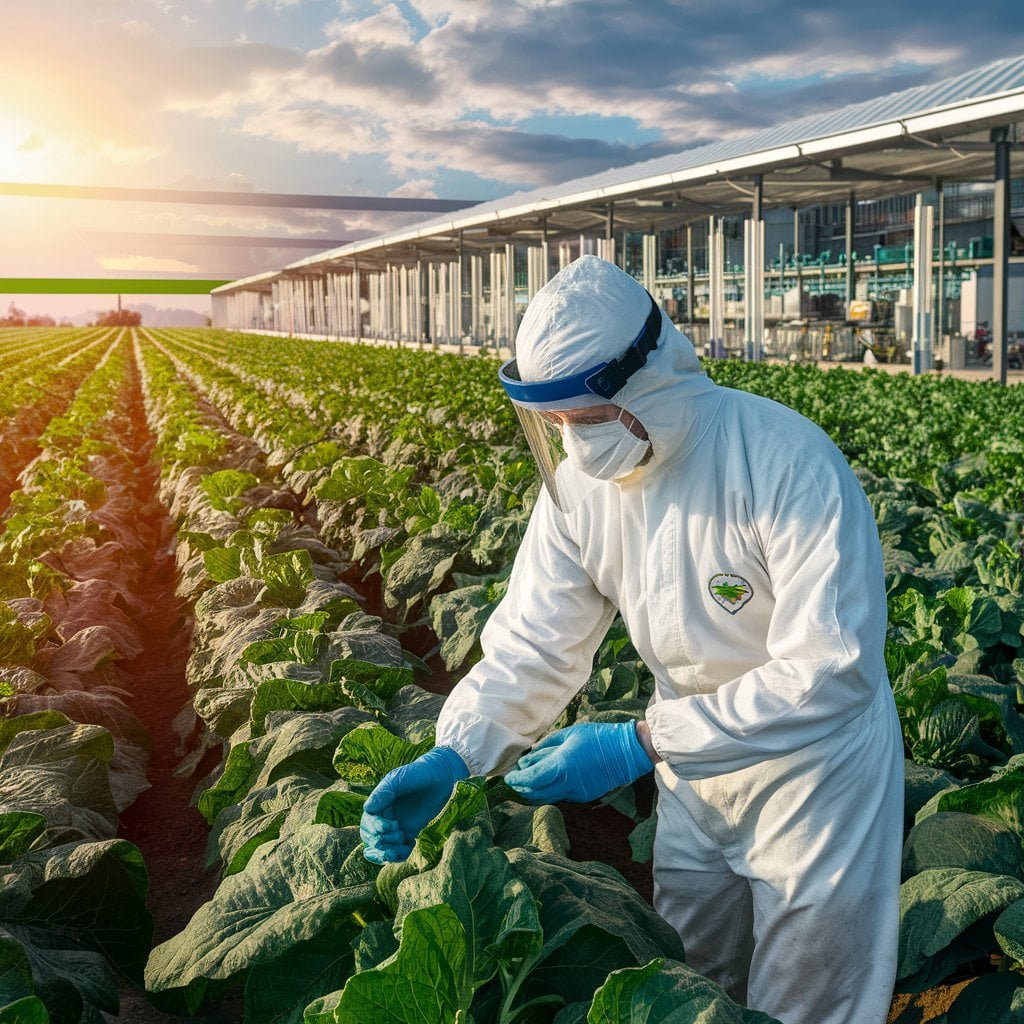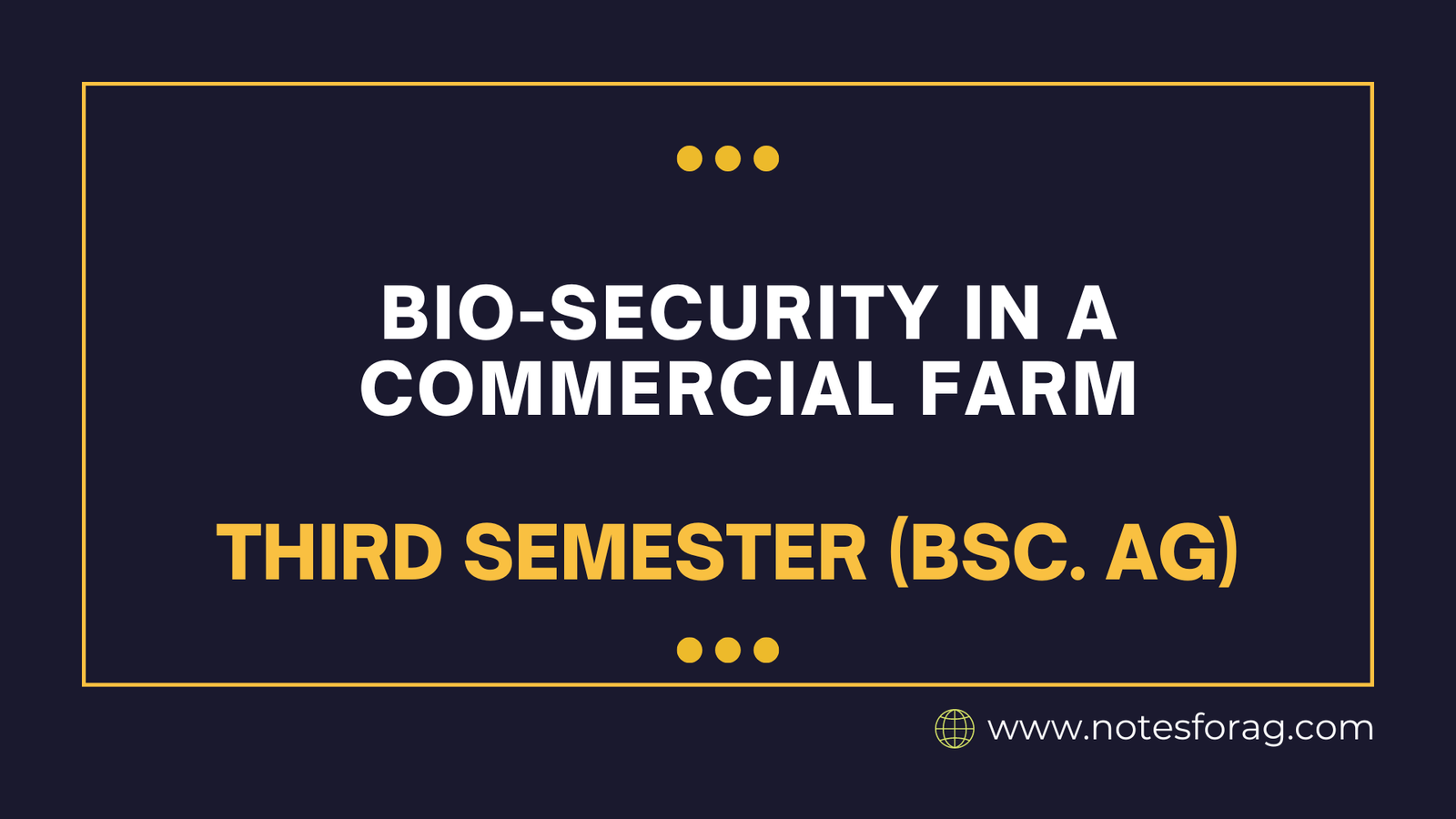In a commercial farm, bio-security refers to a set of activities designed to prevent disease introduction and spread. It includes steps to protect animal health, production, and the agriculture business as a whole. Biosecurity decreases the danger of disease transmission among animals, humans, and the environment by regulating access, enforcing stringent cleanliness practices, and monitoring health statuses. This proactive strategy not only assures cattle health, but it also protects the economic viability of commercial agricultural operations by reducing disruptions and losses caused by disease outbreaks.
Table of Contents
Understanding Bio-Security: Importance and Principles
Bio-security is an essential component of commercial farm management, as it has a direct impact on animal health and output. The fundamental goal of biosecurity measures is to prevent diseases from being introduced, transmitted, and established on farms. This is accomplished by a combination of techniques targeting multiple disease vectors and transmission channels.
Diseases can enter a farm through a variety of pathways, including the introduction of additional animals, contaminated feed and water, equipment, and even farm staff. Effective Bio-security in a commercial farm policies are intended to reduce these hazards by installing strict controls and monitoring mechanisms. For example, quarantine processes for new animals, monthly health tests, and sanitation measures are all essential components of a strong bio-security plan.

Bio-security breaches can have a severe economic impact. Disease outbreaks can cause significant financial losses due to lower output, higher veterinary bills, and trade restrictions. Furthermore, the consequences of such breaches might stretch well beyond the immediate farm, affecting the entire agricultural industry and food supply chain. Maintaining stringent bio-security standards is thus important not only for animal health, but also for economic stability and food safety.
Proactive bio-security entails ongoing risk assessment and the adoption of preventative measures. This includes training farm workers on the importance of hygiene, monitoring for illness symptoms, and keeping detailed records of animal health and farm activities. By cultivating a culture of vigilance and responsiveness, farms can greatly lower the chance of disease outbreaks.
Key Components of Biosecurity
1. Controlled access
- Restricted Entry: Access should be limited to only essential personnel. Visitors should be limited and must adhere to rigorous admission regulations.
- Disinfection Stations: To limit the danger of contamination, install foot baths, hand sanitizers, and car wash stations at all entry points.
2. Health Tracking and Management
- Routine health checks: To prevent disease spread, assess livestock health on a regular basis and isolate any sick animals immediately.
- Vaccination programs: Implement thorough immunization schedules to protect animals against common illnesses.
- Record Keeping: Keep complete health records for all animals, including immunizations, treatments, and cases of disease.
3. Hygiene and sanitation
- Clean facilities: Animal housing, food spaces, and equipment should be cleaned and disinfected on a regular basis to reduce disease contamination.
- Waste Management: Animal waste should be properly managed and disposed of to avoid environmental contamination and illness risk.
- Water quality: Ensure that animals have access to clean and safe water, and test for toxins on a regular basis.
4. Feeding and Bedding Management
- Quality Control: To avoid pathogen contamination, source feed and bedding from reliable vendors.
- Storage Practices: Feed and bedding should be stored in clean, dry conditions to avoid spoiling and pest infestation.
5. Pest and Wildlife Control
- Exclusion Measures: Set up physical barriers to keep pests and wildlife out of animal dwelling facilities.
- Monitoring: Inspect for pests on a regular basis and respond quickly to any infestations.
6. Personnel Training and Protocols
- Education: Educate all farm workers on biosecurity protocols and the significance of disease prevention.
- Protection Gear: Provide and enforce the usage of personal protective equipment (PPE) such gloves, masks, and coveralls.
Benefits of Biosecurity
- Disease Prevention: Reduces the likelihood of disease outbreaks, safeguarding animal health and agricultural productivity.
- Economic Stability: Reduces financial losses due to illness management, treatment costs, and production downtime.
- Market Access: Ensures compliance with health regulations, allowing for easier access to both domestic and foreign markets.
- Animal welfare: Maintains a healthy and safe habitat for animals, promoting their general well-being.
Implementing strong biosecurity measures is a critical component of effective farm management. By regulating access, maintaining hygiene, monitoring health, and educating workers, commercial farms may considerably minimize disease risk and assure a stable, profitable business. Prioritizing biosecurity not only protects cattle on the farm, but also improves the health and economic resilience of the agricultural community as a whole.
Frequently Asked Question(FAQ)
What is biosecurity in a commercial farm?
Biosecurity refers to the methods used to prevent the introduction and spread of infectious illnesses on a farm. These procedures ensure livestock health, production, and agricultural industry safety.
Why is biosecurity important in commercial farming?
Biosecurity is critical in preventing disease outbreaks, which can result in large economic losses, decreased productivity, and poor animal welfare. It also aids in the compliance with health standards required for market entry.
What are some common biosecurity measures to implement on a commercial farm?
Controlled farm access, regular health monitoring, strict hygiene and sanitation procedures, feed and bedding quality control, insect and wildlife control, and comprehensive worker training are all common approaches.
Related Articles

